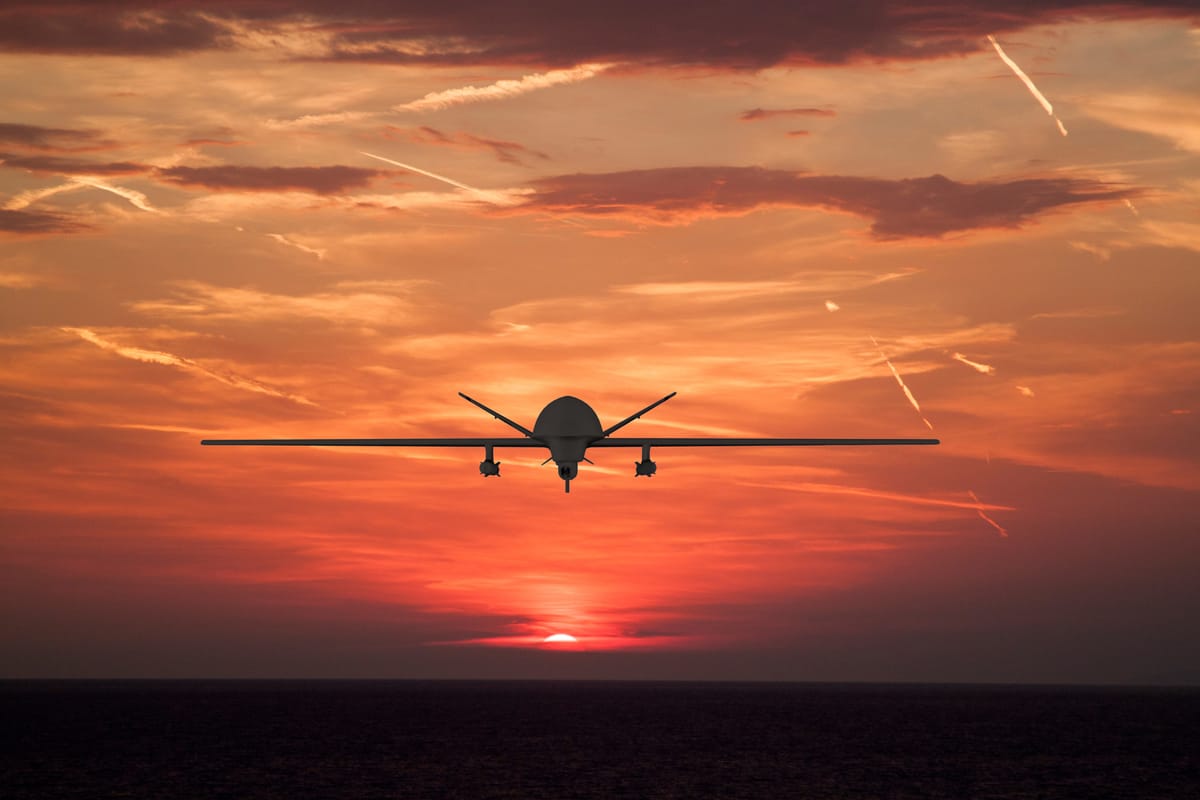Eyes in the Sky: How the US and China are Shaping the Future of Drone Warfare
A balanced overview at how the US and China are shaping the future of warfare through competing advances in unmanned systems and counter-drone defences.

China leverages civil–military fusion to mass-produce low-cost, AI-assisted drones while building layered counter-UAS defences for scenarios like Taiwan.
The US leads in high-end UAVs but faces challenges in rapidly fielding small and medium drones due to slow procurement processes.
Both nations are investing in AI, swarming concepts, and advanced countermeasures, making adaptability and integration key to future dominance.
The rapid advancement of drone technology is transforming modern warfare, placing the United States and China at the forefront of a multi-domain and multi-technology competition. This is not simply an arms race in terms of quantity or capability—it is a strategic contest shaped by innovation cycles, industrial capacity, procurement agility, and the ability to integrate battlefield lessons. Both countries view unmanned aerial systems (UAS) as central to future military effectiveness, and both are drawing on the experiences of recent conflicts, particularly the war in Ukraine, to refine their approaches. Understanding these perspectives from both sides is essential to evaluating the evolving global security environment.
China’s Accelerated Ascent in Drone Warfare
From a Chinese perspective, drones are a critical part of the “intelligentized warfare” strategy, intended to integrate advanced sensors, artificial intelligence (AI), and networked operations into a cohesive military doctrine (RAND). Early Chinese systems such as the Wing Loong and CH-series drones often mirrored foreign designs, including U.S. systems, but China has since moved rapidly to field indigenous designs optimised for domestic operational requirements. The People’s Liberation Army (PLA) is now expanding its inventory of low-cost, AI-assisted drones, integrating them across infantry units and tailoring them for mass deployment in high-intensity scenarios.
China has studied Ukraine’s use of first-person view (FPV) kamikaze drones closely, recognising their cost-effectiveness and disruptive battlefield potential. As a result, the PLA has begun deploying smaller, tactical systems across multiple echelons. The country’s robust commercial drone industry, led by firms such as DJI, provides a ready technological base for military adaptation, reflecting China’s policy of civil–military fusion.
Countering electronic warfare has become a priority. China is experimenting with wire-guided drones capable of operating up to 50 kilometres without being affected by jamming. This is supported by China’s dominance in global fibre optic cable production (Statista), which ensures secure supply for such systems. While Chinese drones currently field limited autonomy—such as automated takeoff/landing and collision avoidance—the PLA is investing in more advanced autonomous capabilities, including “pixel lock” guidance for target persistence when jammed.
China has also showcased drone swarming concepts and developed coaxial micro-drones with higher payload capacities and improved stability, which may offer tactical advantages in urban or complex terrain. While not yet widely deployed, these systems demonstrate a capacity for innovation in niche areas.
China’s Comprehensive Counter-Drone Strategy
Chinese military planners recognise that drones pose both an opportunity and a threat. As part of preparation for high-end scenarios such as a Taiwan contingency, the PLA is investing in layered counter-UAS systems designed to address a wide spectrum of threats—from small commercial quadcopters to coordinated swarms and large unmanned combat aerial vehicles (UCAVs).
The approach includes high-powered microwave systems, directed-energy lasers, and conventional kinetic interceptors. Chinese analyses of Ukraine have reinforced the need for diverse and redundant defensive layers, with flexibility to adapt to different control methods, payloads, and flight profiles.
From the Chinese point of view, building resilience against U.S. and allied unmanned capabilities is as vital as expanding their own drone arsenal. This mirrors U.S. concerns about neutralising Chinese unmanned assets in a potential future conflict.
The United States: Strengths and Challenges
From an American perspective, the U.S. continues to lead in high-end, long-endurance drones such as the MQ-9 Reaper and RQ-4 Global Hawk, which have been operationally proven in counterterrorism and reconnaissance missions. However, Chinese analysts note that the U.S. advantage at the top tier is less relevant in saturation or attrition scenarios where low-cost drones dominate.
In medium-capability drones, such as one-way attack loitering munitions, the U.S. lags behind China’s rapid expansion. Chinese acquisition of Israel’s Harpy drone and domestic production of large volumes of kamikaze drones has created capacity that the U.S. is still working to match. In small tactical drones for ground units, the U.S. has improved its procurement processes but remains hampered by multi-year acquisition timelines, a weakness often highlighted in Chinese military commentary.
The U.S. Army’s “Transforming in Contact” (TIC) initiative aims to address this gap by accelerating experimentation and procurement, including purchasing commercial off-the-shelf (COTS) systems and adapting them for military use (GAO). The current U.S. leadership is also seeking to bypass elements of the traditional Planning, Programming, and Budgeting (PPB) process to speed delivery.
U.S. Counter-Drone Strategy
U.S. counter-drone efforts have historically prioritised integrated air defences against high-end threats, while short-range air defence (SHORAD) tailored to small UAS has lagged. Systems such as the Marine Air Defense Integrated System (MADIS) and the Mobile Low, Slow Unmanned Aerial Vehicle Integrated Defense System (MLIDS) are now in deployment, but U.S. planners acknowledge the need to treat counter-UAS as a unit-level responsibility rather than a purely centralised function.
Reflecting lessons from Ukraine, the U.S. Army has announced a $36 billion plan to equip each active-duty division with around 1,000 drones (Army Times), signalling a recognition that drones will be integral to all levels of future combat.
Shared Themes and Divergent Approaches
From both Chinese and American perspectives, the drone race is not solely about technology—it is about integration, adaptability, and industrial mobilisation. China’s strength lies in its capacity for rapid mass production, lower-cost innovation, and the close integration of commercial and military sectors. The U.S. advantage is in high-end performance, long-range operational experience, and the breadth of its global network of allies and partners.
Both nations are investing in AI, though current operational autonomy remains limited. Both are experimenting with swarming concepts, niche drone designs, and advanced countermeasures. And both recognise the necessity of layered defence systems to address an increasingly diverse range of aerial threats.
However, there are also mutual vulnerabilities. For China, there is the challenge of proving that mass-produced, lower-cost systems can survive in heavily contested environments with advanced electronic warfare. For the U.S., the issue is accelerating acquisition and scaling production without sacrificing quality or interoperability with allied systems.
Outlook
The U.S.–China drone competition is shaping the future of airpower in both low-intensity and high-intensity conflicts. In a balanced assessment, both sides exhibit areas of superiority and areas of vulnerability. China’s capacity for rapid proliferation of tactical drones and layered defences contrasts with U.S. dominance in high-end platforms and global operational experience.
For both countries, the race will be won not just by technological breakthroughs but by the speed of adaptation, the efficiency of procurement systems, and the ability to integrate lessons from real-world combat into doctrine and force structure. This arms race is less about replacing manned systems entirely and more about creating a flexible, resilient mix of capabilities that can operate effectively in the complex battlespaces of the future.



